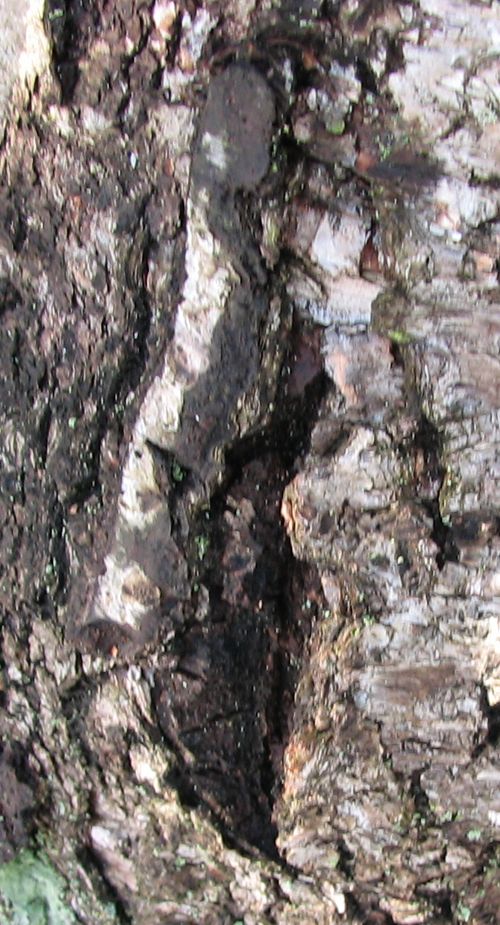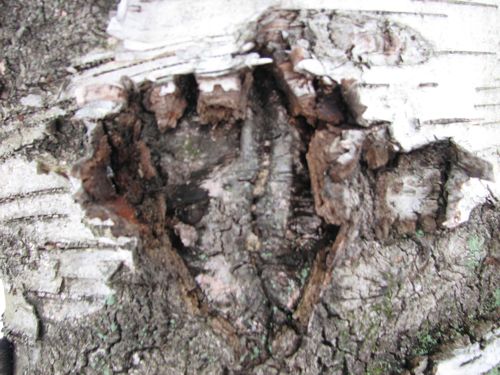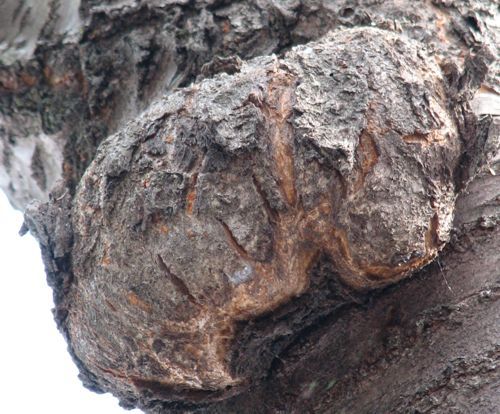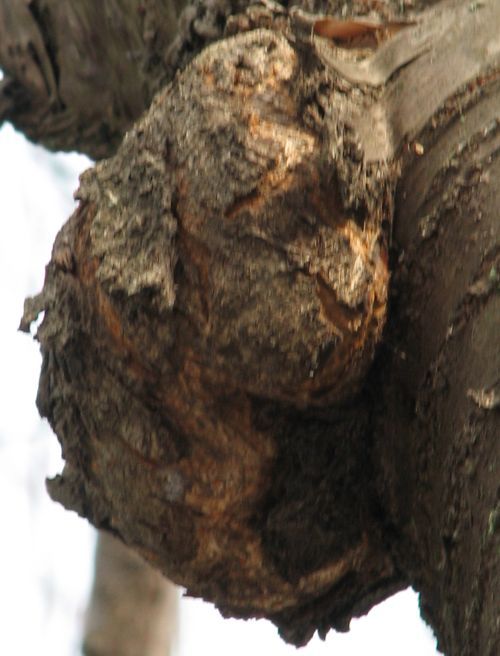THE CHAGA QUEST
1/12/06 After reading about Chaga in the BMC Bulletin, and checking the Internet to see what it looks like, I went into the park in my back yard and started looking for birch and Chaga. The first possibility I found on a large old White Birch, about 2' in diameter. It had several dark spots and knobs and in places the thick bark was missing. I cut off a piece from one 2" knob and here is what I saw

Is it Chaga or no? There is no sign of clinkers so I don't think this is it. Later I learned that this is not a Chaga!
Below is one of the dark spots, like a split in the bark, where the bark is missing.

Could this be a place where a Chaga once was? Wishful thinking!

Could this be a place where a Chaga once was? Wishful thinking!
Below is a similar roundish area where the bark is missing and the outer bark pealed back.


The other tree is a Sweet Birch (aka Black Birch), (maybe) with what looked like a gall growing out of the tree about 10' up. I used 12x optical zoom to get a closer look. On this day the light was bad so I went back the next day to take the picture.

I see no clinkers but the redish brown showing through looks like a Chaga to me. It is about 8" long by 4" wide and 4" high. Another false alarm :o) Later I decided the tree was actually a wild cherry.

I see no clinkers but the redish brown showing through looks like a Chaga to me. It is about 8" long by 4" wide and 4" high. Another false alarm :o) Later I decided the tree was actually a wild cherry.
Here is a different perspective.


1/13/06 I went to Douglas State Forest and took this picture with the 12x telephoto lens. That fork was about 18' up the tree. The tree was about 15" in diameter at the base.

The top part looks like a small Chaga to me. It was to high up to harvest so it will remain a maybe
Inonotus obliquus? growing on White Birch
aka clinker polypore
aka Chaga
aka clinker polypore
aka Chaga
A large White Birch, over two feet diameter, growing on private property near the road. About 15' up, on a branch about 8" in diameter is what looks to me like Chaga. Picture taken at full 12x optical zoom and 5 mp size then cropped and resized and compressed.


A bit from the side


The base of the tree has a rot hole that goes to the center of the tree.


First found a grove of Yellow Birch that were disgustingly healthy, even those about 2' in diameter. No sign of Inonotus obliquus.
Then I lucked out. Near a small stream I found countless Yellow Birch and majority showed Nectria galligena damage. Here is a typical scar:

Notice that the Clinkers grew in the right side of this scar. On the left and bottom the clinkers are missing.

Notice that the Clinkers grew in the right side of this scar. On the left and bottom the clinkers are missing.
Here is the same scar but I cut off some of the clinkers to show the orange brown flesh under the black outer part.
Not enough for tea but enough to try as a tinder. Now I am pretty sure that all those other suspects on White Birch were also Chaga, though too small or out of reach to be useful. Now to find one large enough to make Chaga Tea
Link back to more info
Link back to more info


No comments:
Post a Comment